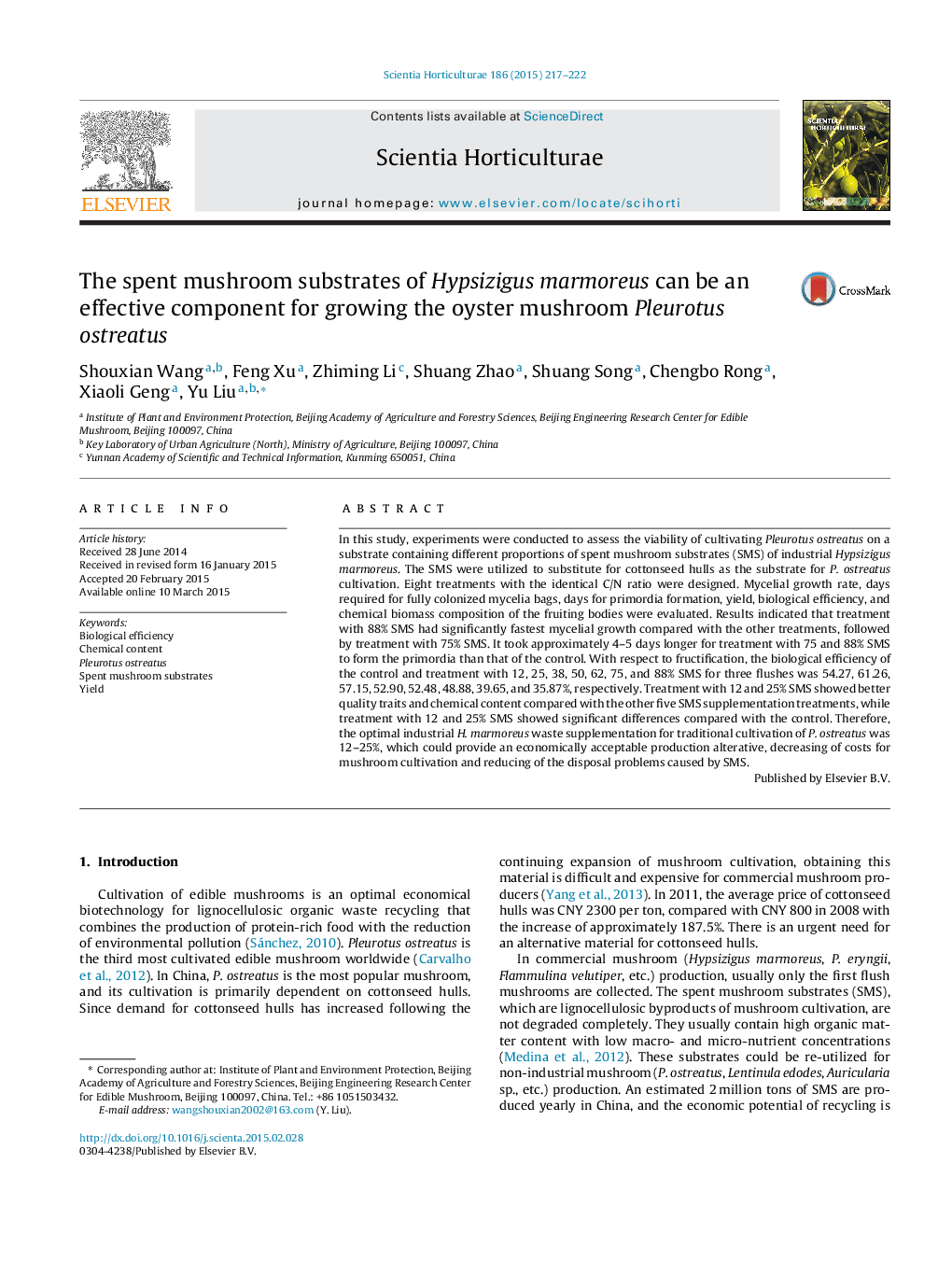| کد مقاله | کد نشریه | سال انتشار | مقاله انگلیسی | نسخه تمام متن |
|---|---|---|---|---|
| 4566426 | 1628812 | 2015 | 6 صفحه PDF | دانلود رایگان |

• Spent mushroom substrate (SMS) can be used for oyster mushroom cultivation.
• 12–25% supplementations of SMS show earlier primordial initiation.
• 12–25% supplementations of SMS show higher yield than the others.
• No significant differences of these eight treatments (the control and treatment with 12, 25, 38, 50, 62, 75, and 88% SMS) in chemical contents.
• Reuse of SMS can decrease costs and reduce disposal problems.
In this study, experiments were conducted to assess the viability of cultivating Pleurotus ostreatus on a substrate containing different proportions of spent mushroom substrates (SMS) of industrial Hypsizigus marmoreus. The SMS were utilized to substitute for cottonseed hulls as the substrate for P. ostreatus cultivation. Eight treatments with the identical C/N ratio were designed. Mycelial growth rate, days required for fully colonized mycelia bags, days for primordia formation, yield, biological efficiency, and chemical biomass composition of the fruiting bodies were evaluated. Results indicated that treatment with 88% SMS had significantly fastest mycelial growth compared with the other treatments, followed by treatment with 75% SMS. It took approximately 4–5 days longer for treatment with 75 and 88% SMS to form the primordia than that of the control. With respect to fructification, the biological efficiency of the control and treatment with 12, 25, 38, 50, 62, 75, and 88% SMS for three flushes was 54.27, 61.26, 57.15, 52.90, 52.48, 48.88, 39.65, and 35.87%, respectively. Treatment with 12 and 25% SMS showed better quality traits and chemical content compared with the other five SMS supplementation treatments, while treatment with 12 and 25% SMS showed significant differences compared with the control. Therefore, the optimal industrial H. marmoreus waste supplementation for traditional cultivation of P. ostreatus was 12–25%, which could provide an economically acceptable production alterative, decreasing of costs for mushroom cultivation and reducing of the disposal problems caused by SMS.
Journal: Scientia Horticulturae - Volume 186, 21 April 2015, Pages 217–222